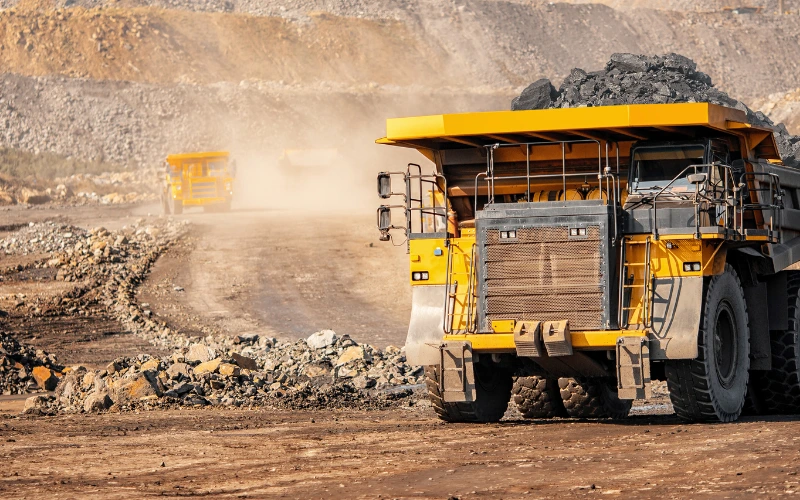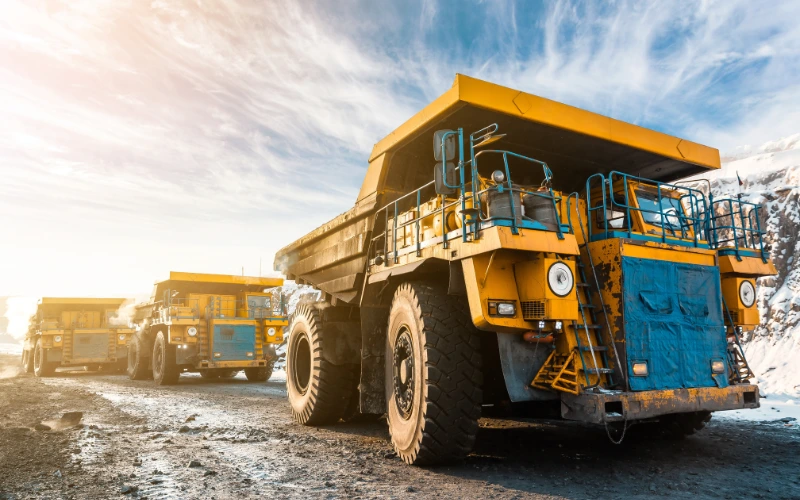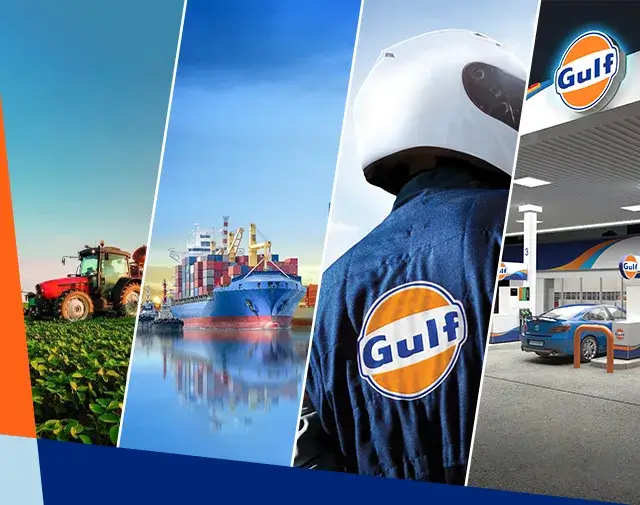Reducing downtime in mining operations
16 Oct 2025

Operational downtime can severely disrupt business continuity, leading to significant financial losses and reputational damage. However, this is mostly preventable with the right lubrication strategy. Mining equipment is subject to harsh conditions and extreme pressure, so mining companies often have to allocate almost half of their annual budget to equipment maintenance.
That’s why preventive maintenance with a robust lubrication system is critical to keeping downtime to a minimum and reducing maintenance costs. The right lubricant selection does more than protect components; it helps reduce cost per operating hour, extend mean time between failures and support production targets by keeping assets available and reliable.
In this guide, we’ll explore the pivotal role lubricants play in keeping mining equipment operational, reliable and cost-effective, and how the right lubrication plan can become a key driver of equipment performance and bottom-line value.
Why lubrication is critical in mining operations
Mining equipment, such as crushers, excavators, conveyors and haul trucks, is subject to extreme environments. From cool underground spaces to transporting materials in the roaring sun, mining equipment operates in harsh temperatures. Not only that, but mining environments are often dusty, dirty or wet, which can pose a number of challenges.
With this in mind, lubricants are critical for ensuring your equipment operates reliably and smoothly in isolated settings as well as protecting high-value components from micropitting, scuffing, and premature failure under heavy loads.
A robust lubrication plan directly supports production targets by maximising equipment availability and reducing the cost per operating hour, especially in remote locations where repairs are slow and costly. So, avoiding unexpected breakdowns and repairs is crucial.

Common challenges in mining equipment lubrication
Keeping your mining equipment properly lubricated and operating smoothly is essential, as harsh operating conditions can accelerate wear and lead to equipment breakdowns and failures. These challenges don’t just threaten individual components; they drive up unplanned maintenance costs, increase the cost per tonne, and put production schedules at risk.
Here are just some of the challenges you may face when lubricating mining equipment.
|
Challenge |
Why it’s a problem |
|
Contamination (dust, water) |
Wet and dusty environments can impact lubrication performance and lead to equipment failures |
|
Temperature extremes |
High temperatures can reduce lubricant viscosity, leading to equipment wear, while cold climates can make lubricants thicker and unable to flow freely |
|
Long drain intervals |
Extending drain intervals can be a challenge because lubricants can become contaminated more easily, and older equipment can’t withstand longer intervals |
|
Access to remote locations |
Mines are often remote and difficult to reach. So, if a repair is needed, it can be harder for mechanical engineers to access the site, meaning repairs take longer |
While this list isn’t exhaustive, it highlights some of the many challenges faced by fleet managers and miners using heavy machinery in difficult conditions. So, how can you overcome them to ensure your mining equipment runs smoothly every day?
Choosing the right lubricants for mining equipment
Mining equipment handles enormous loads, which puts it under huge strain, so optimising efficiency is crucial for increasing reliability. The best way to do that? A comprehensive lubrication strategy to protect key components of your machinery and keep it operating steadily.
Engine oils
Engine oil is responsible for lubricating components exposed to continuous friction and minimising wear and tear. Without engine oil, your mining equipment simply can’t function properly.
Off-highway diesel engines require heavy-duty engine oil to operate properly. Synthetic blends or fully synthetic engine oils are often the best choice, as they have a higher-quality base oil and contain additives that enhance performance.
The recommended grade of engine oil for mining equipment is usually SAE 15W-40, as it performs well in varying temperatures. However, if you are operating in consistently low temperatures, a lower viscosity would be better suited, while a higher viscosity oil would be more appropriate in hotter climates.
Selecting high-performance synthetic blends with proven soot handling and thermal stability can help extend drain intervals and reduce unplanned downtime in haul trucks and loaders operating under heavy loads.
Gear oils
Gear oil provides protection against wear, corrosion and extreme temperatures, which can be accelerated by carrying heavy loads in high-pressure environments. It prevents metals from dispersing and causing additional friction, and is often enhanced with protective wear additives, which coat and protect the components in the gear system.
Essential for lubricating heavy-load transmission systems, gear oil ensures that the gearbox operates smoothly and without friction. High-performance synthetic gear oil with extreme pressure (EP) additives helps prevent gear tooth micropitting and scuffing, reducing gearbox rebuild frequency and supporting longer service intervals in crushers and conveyors.
Hydraulic fluids
Hydraulic fluid acts as a lubricant, sealant and coolant so equipment can perform consistently under extreme pressure. It is important for powering excavators, loaders, and drills for breaking rock, digging and lifting heavy loads. Without it, critical mining activities would simply not be possible.
You need to choose a hydraulic fluid that can perform effectively under extreme pressure, high temperatures and offers fire resistance to protect workers and equipment operating in hazardous environments. For this reason, fire-resistant hydraulic fluids (FRHFs) and synthetic hydraulic oils are generally recommended.
The right hydraulic fluid selection reduces the risk of cavitation damage and supports reliable performance in drills, loaders, and haul trucks operating under extreme duty cycles
Greases
Greases lubricate moving parts, like bearings and joints, within mining equipment to prevent friction and extend the lifespan of mobile and stationary equipment. It prevents metal-to-metal contact by forming a protective layer to improve efficiency.
The best greases for mining equipment are lithium for overall performance or bentonite for high temperatures and water resistance. Appropriate grease selection, combined with monitoring, can significantly extend bearing life and reduce maintenance man-hours across mobile and fixed plants.
When choosing mining lubricants, it is always important to consult your OEM’s recommendations in your equipment manual.

4 benefits of using high-performance lubricants in mining equipment
High-performance lubricants contribute to making sure your equipment is operating as smoothly and efficiently as possible, while minimising breakdowns and downtime. 4 key benefits of using high-performance lubricants include:
-
Reduced wear
The right lubricants can reduce wear on your mining equipment by preventing friction between components that leads to wear, corrosion and failures.
-
Improved efficiency
Lubricating mining equipment can make operations smoother and more efficient while using less energy and contributing to reduced downtime.
-
Extended equipment life
When components are properly lubricated, they can operate for longer periods without needing repairs or replacements.
-
Lower maintenance costs
By reducing wear and minimising downtime, you’ll benefit from lower maintenance budgets over time when using high-performance lubricants.
Gulf’s industrial engine oils and lubricants are specially formulated to handle extreme mining conditions and have proven to be an economical and reliable choice.
Best practices for lubricating mining equipment
To get the most out of your mining equipment, regular lubrication and maintenance are key. By following these tips for best practice, you can minimise the need for repairs and costly replacements.
Regular monitoring and oil analysis
Regular oil analysis can predict corrosion, contamination and indicate potential failures before they occur. By monitoring your lubricants, you can get an understanding of the baseline conditions and quickly detect any changes that may indicate a problem.
Proper storage and handling
Lubricants should be stored indoors or undercover in an outdoor shelter where they can be protected from extreme temperatures and contamination. You should also label each lubricant clearly to avoid cross-contamination.
Predictive scheduled maintenance
Predictive maintenance uses data analysis and regular monitoring to predict and prevent equipment failures. This can increase equipment reliability and minimise failures.
Training for on-site personnel
Train up staff working on site on how to perform maintenance checks in line with a predictive maintenance schedule. By making routine maintenance a normal part of day-to-day activities, it can be carried out correctly and autonomously.
In mining operations, lubrication is not just about protecting equipment; it is a critical part of achieving operational resilience. The right lubrication plan helps mining fleets perform reliably in the harshest conditions while enabling data-driven maintenance that keeps operations running smoothly.
Gulf’s mining-grade lubricants and Gulf CARE fluid analysis services give mining operators the confidence to extend service intervals, reduce unplanned downtime and make smarter maintenance decisions that protect their bottom line.
Learn about our industrial lubricants and how they can protect your mining equipment.

